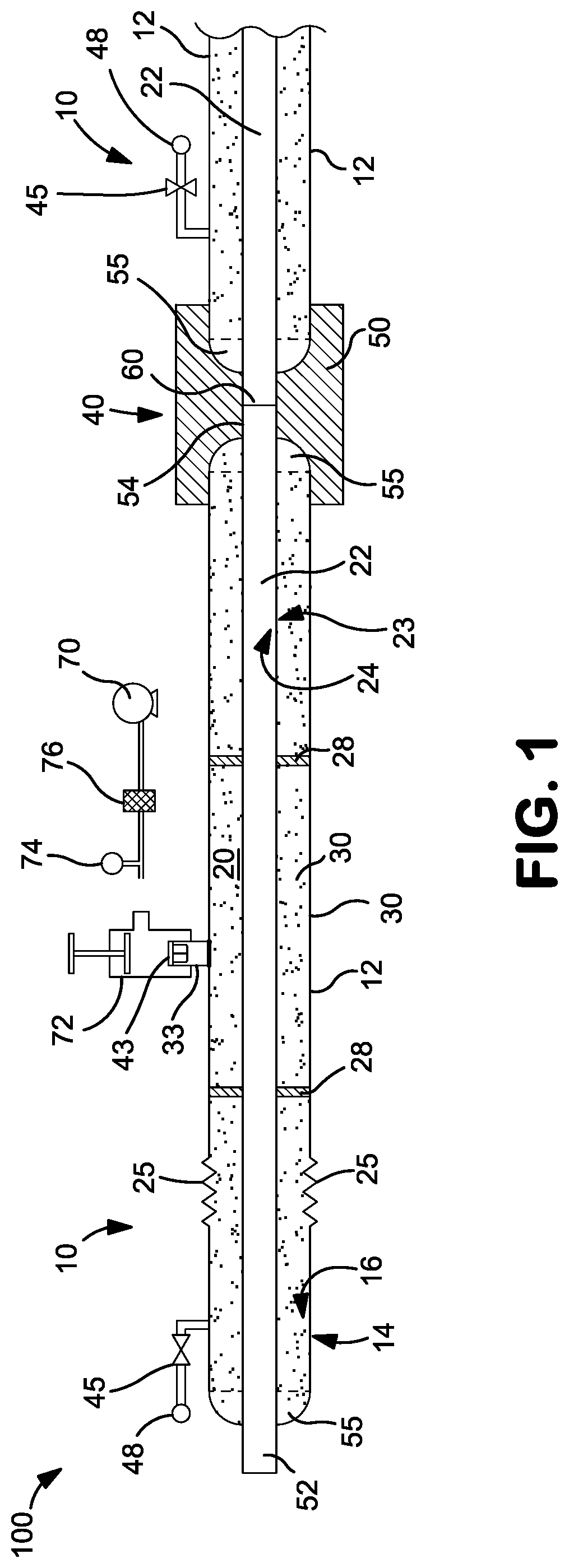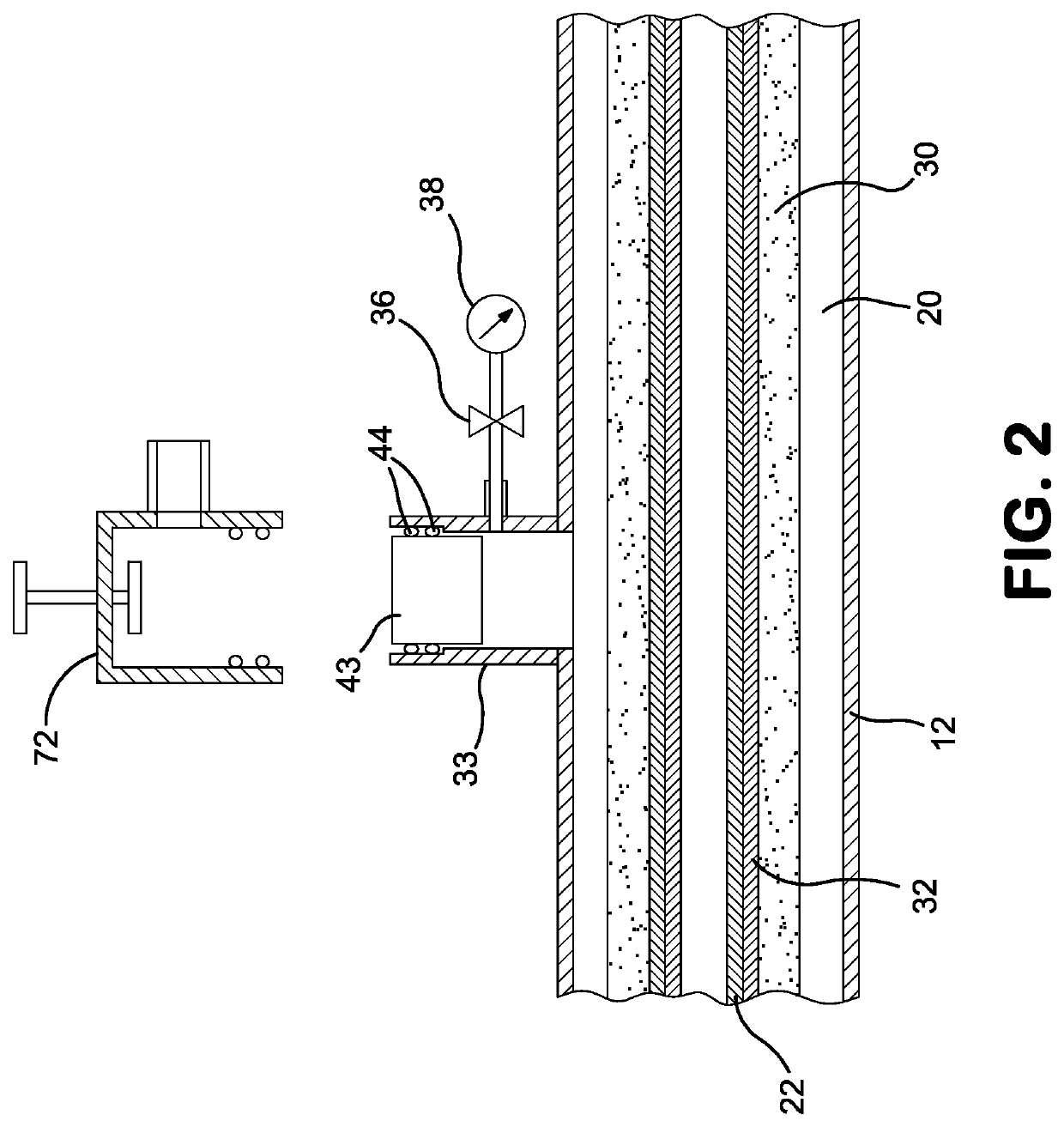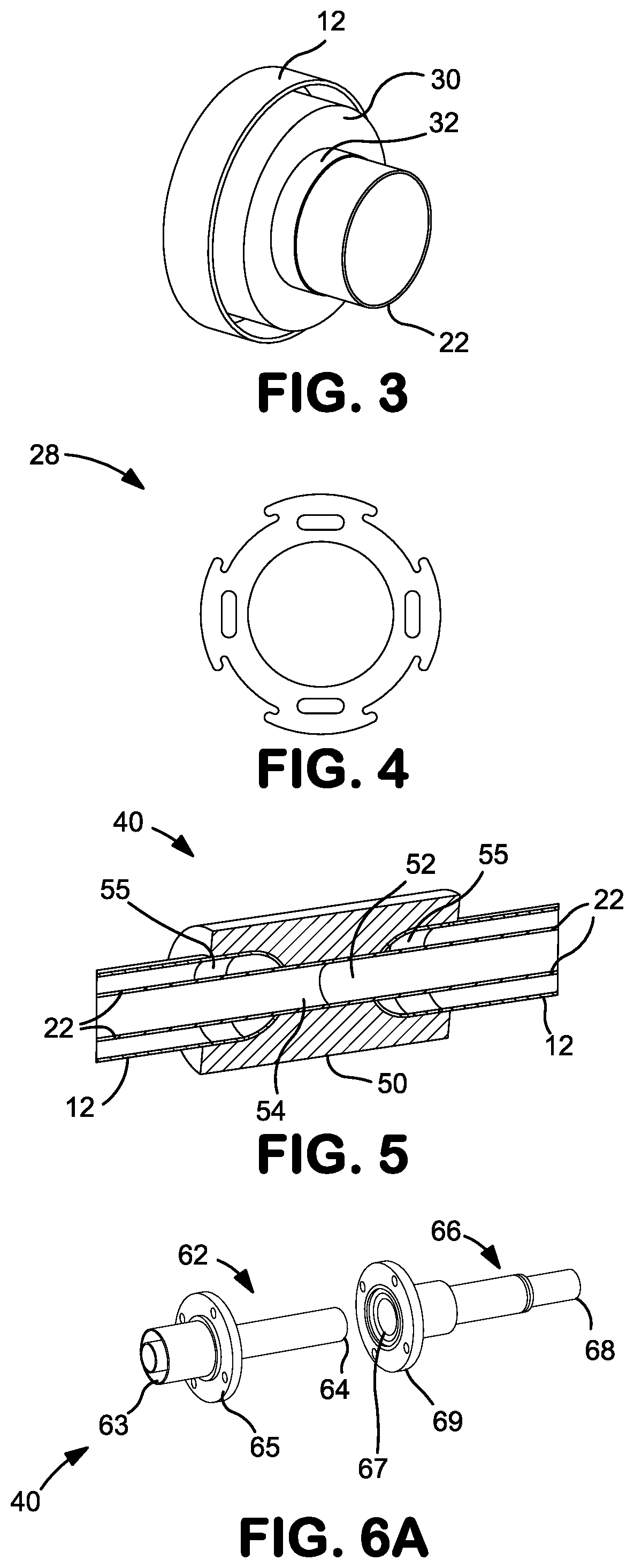Modular vacuum insulated piping
a vacuum insulation and module technology, applied in the field of insulation systems, can solve the problems of high manufacturing cost of field built vacuum insulation piping systems, high cost of field work associated, and high production cost of vacuum required for conventional vacuum insulation systems for double walled piping systems, so as to facilitate the introduction of condensable gas and facilitate the pressurization and depressurization of insulation space.
- Summary
- Abstract
- Description
- Claims
- Application Information
AI Technical Summary
Benefits of technology
Problems solved by technology
Method used
Image
Examples
Embodiment Construction
[0018]The presently claimed system and methods address the above-identified needs by fabricating individual double walled pipe sections with insulation, preferably aerogel based insulation, and designed to operate a vacuum level of between about 1 micron Hg and 300 micron Hg. The individual modular pipe sections are subsequently transported to the construction site where an aerogel-based vacuum insulated piping system is assembled by coupling a plurality of the pre-fabricated vacuum insulated pipe sections.
[0019]This pre-fabricated modular pipe section approach ensures the quality of each pipe section is uniform and consistent, including the construction of each pipe section as well as the vacuum system within each pipe section. Since the vacuum pull down of each pipe section occurs in the shop fabrication facility, the amount of time spent in the field installing or assembling the vacuum insulated piping system as well as the associated field installation costs and risks are minimi...
PUM
 Login to View More
Login to View More Abstract
Description
Claims
Application Information
 Login to View More
Login to View More - R&D
- Intellectual Property
- Life Sciences
- Materials
- Tech Scout
- Unparalleled Data Quality
- Higher Quality Content
- 60% Fewer Hallucinations
Browse by: Latest US Patents, China's latest patents, Technical Efficacy Thesaurus, Application Domain, Technology Topic, Popular Technical Reports.
© 2025 PatSnap. All rights reserved.Legal|Privacy policy|Modern Slavery Act Transparency Statement|Sitemap|About US| Contact US: help@patsnap.com



